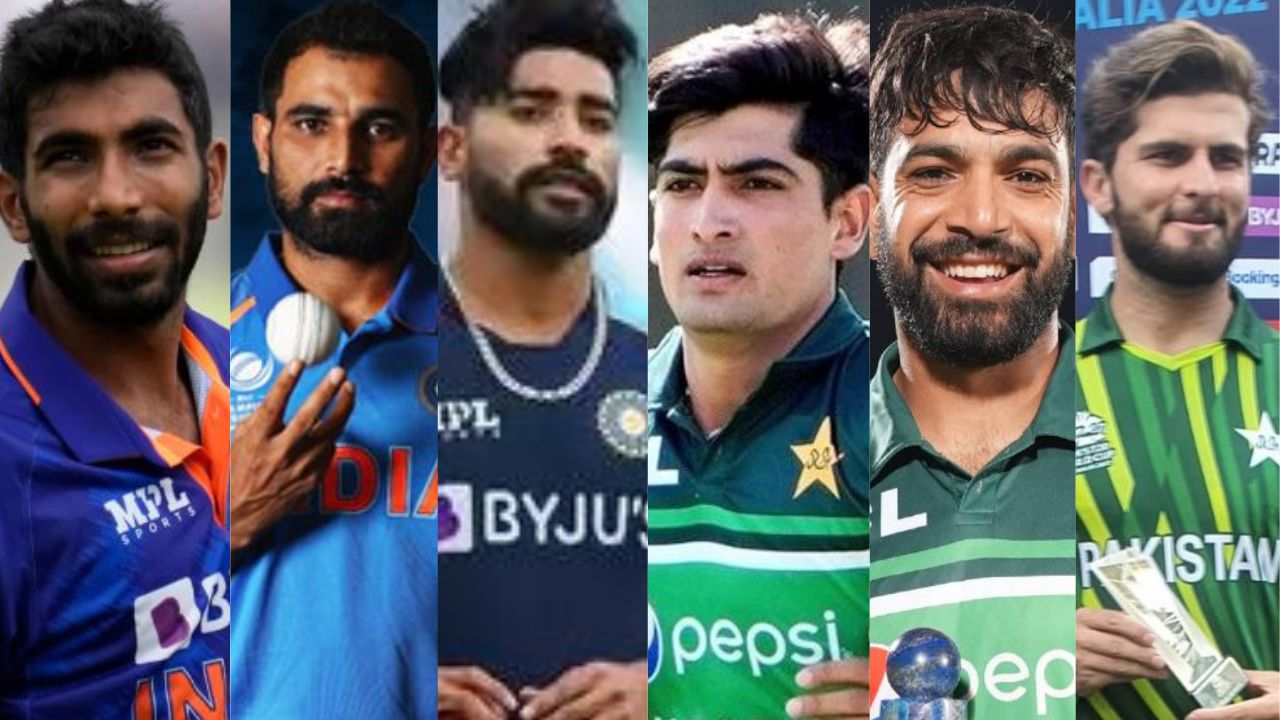Pakistan’s pace bowling attack can be considered the most dangerous in the Indian subcontinent, even more so than Australia and South Africa. Meanwhile, India’s pace battery is more experienced than Pakistan’s, but due to playing of an all-rounder at number eight, it has become a compulsion for Team India to play with one fewer fast bowler in the match. From a technical perspective, Shaheen Shah Afridi, after delivering the ball, efficiently transfers his body weight onto his other foot. His hand movement remains swift, and he mostly dismisses batsmen with fuller-length deliveries, which leaves very little time for the batsman to adjust to the inward swing of the ball. He has taken Rohit Sharma and Virat Kohli’s wicket twice with such deliveries. Haris Rauf has shown significant improvement in his bowling while representing the Melbourne Stars in the BBL. He possesses incredible speed and uses his entire body to generate pace, including a bolt-like position to give the ball velocity. His body weight is fully transferred onto his landing foot. Additionally, he effectively utilizes his elbows, knees, and hips to generate speed. However, his hand movement is not as swift. In this regard, his action closely resembles that of Waqar Younis. Naseem Shah doesn’t rely solely on supporting wicket for his success. His bowling arm and non-bowling arm work in sequence, ensuring precision in his line and length. He extracts pace from a run-up, and at times, his bowling arm sometimes is extended away from his body, aiding his opponents in playing big strokes against him. It’s evident that Indian batsmen won’t let such opportunities slip by.
Meanwhile, Indian fast bowlers often showcase a variety of skills based on their experience. Shami’s non-bowling arm and wrist position are perfectly synchronized, due to which he has such seam movement which no one in the world has. Mohammad Siraj also brings the ball in with an open chest. Like Shami, he also has the art of moving the ball on both ways. On the other hand, Bumrah employs an open-chested action and generates high-speed deliveries with a short run-up. Handling his awkward bounce can be quite challenging. The difficulty lies in the fact that when releasing the ball, his knee, elbow, and shoulder all align in the same direction, which poses a constant risk of injury. Imam, Fakhar, and Babar in Pakistan’s top order will require special attention, particularly regarding Bumrah’s variety, Shami’s seam movement and Siraj’s ability to swing the ball both ways. This is similar to India’s top order, where extra caution must be exercised, especially by Rohit Sharma, against Afridi’s deliveries that move inward. Similarly, Gill and Virat will need to enhance their footwork against Pakistan’s pace battery. These bowlers employ various strategies to dismiss Virat Kohli. In such situations, there are two main approaches: either attack them aggressively from the beginning in the style of Sehwag or adopt a Test-match-like batting approach for the first 10 to 15 overs, and then accelerate the run rate in the middle overs. The second approach is safer because if wickets are in hand, it can lead to a long innings, allowing Team India to reach a score around 300 or so. Pakistan can chase such a big score only if their top-order batsmen set the stage for them. If they lose two or three wickets early, their middle order struggles to control the damage. It’s evident that the fast bowling from both sides and their respective top-order batting will be the biggest attraction of this match.







